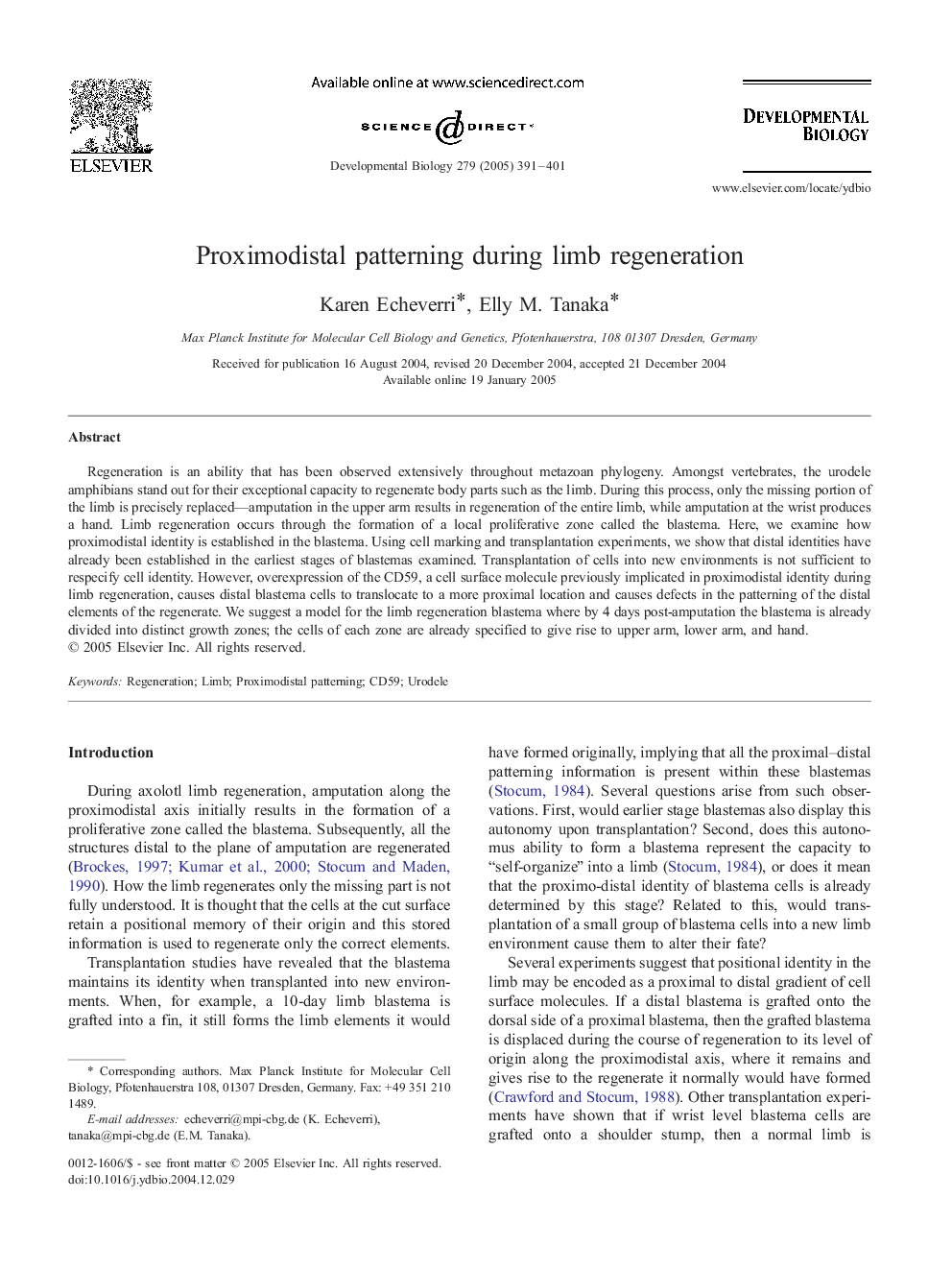| Article ID | Journal | Published Year | Pages | File Type |
|---|---|---|---|---|
| 10934257 | Developmental Biology | 2005 | 11 Pages |
Abstract
Regeneration is an ability that has been observed extensively throughout metazoan phylogeny. Amongst vertebrates, the urodele amphibians stand out for their exceptional capacity to regenerate body parts such as the limb. During this process, only the missing portion of the limb is precisely replaced-amputation in the upper arm results in regeneration of the entire limb, while amputation at the wrist produces a hand. Limb regeneration occurs through the formation of a local proliferative zone called the blastema. Here, we examine how proximodistal identity is established in the blastema. Using cell marking and transplantation experiments, we show that distal identities have already been established in the earliest stages of blastemas examined. Transplantation of cells into new environments is not sufficient to respecify cell identity. However, overexpression of the CD59, a cell surface molecule previously implicated in proximodistal identity during limb regeneration, causes distal blastema cells to translocate to a more proximal location and causes defects in the patterning of the distal elements of the regenerate. We suggest a model for the limb regeneration blastema where by 4 days post-amputation the blastema is already divided into distinct growth zones; the cells of each zone are already specified to give rise to upper arm, lower arm, and hand.
Keywords
Related Topics
Life Sciences
Biochemistry, Genetics and Molecular Biology
Cell Biology
Authors
Karen Echeverri, Elly M. Tanaka,
